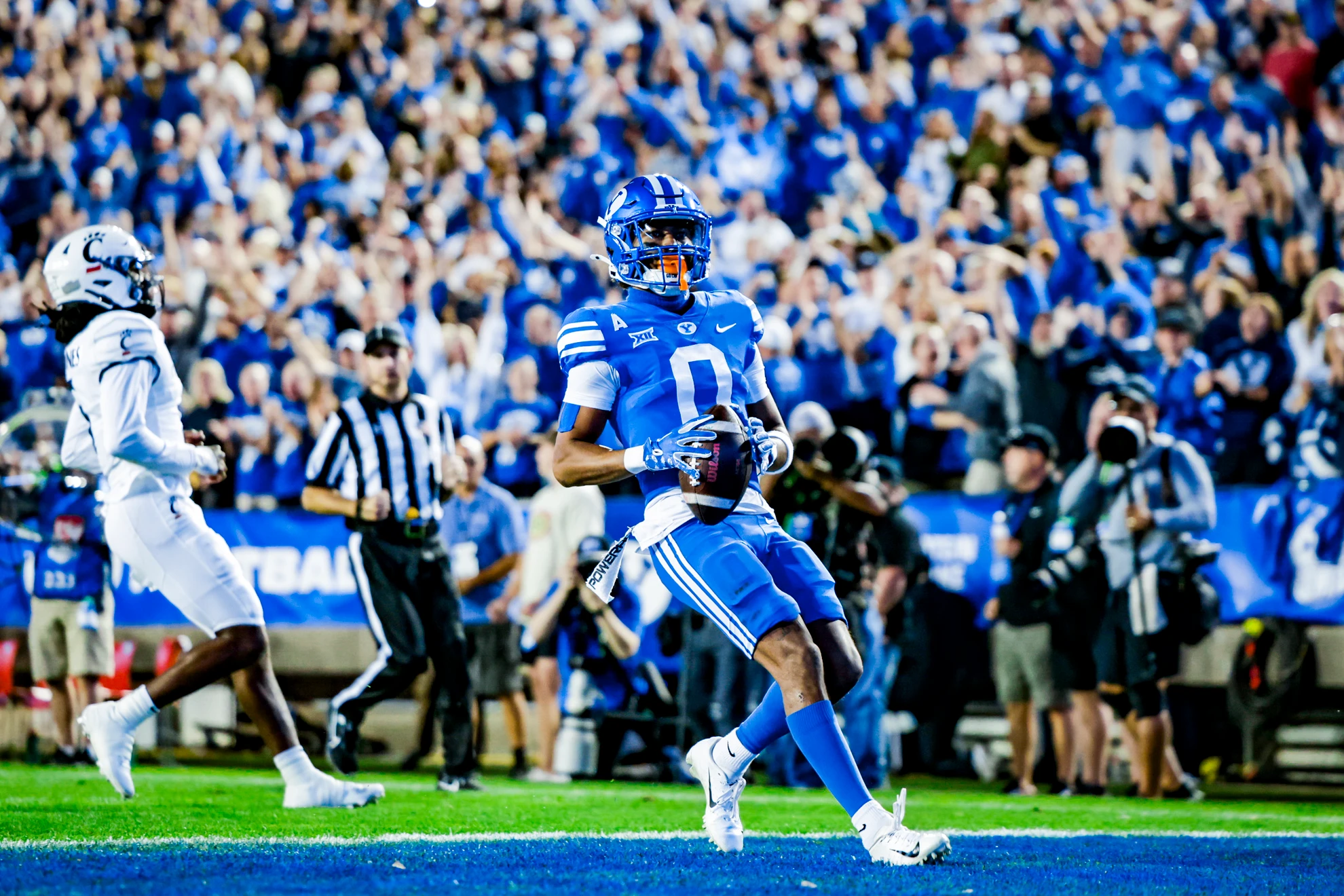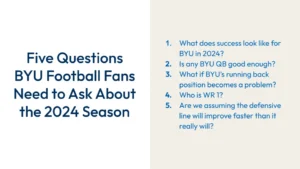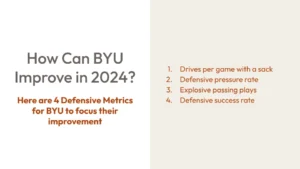After BYU beat Cincinnati for its first ever Big 12 victory, I heard a consistent thread from Friday night through the weekend regarding the Cougar offense. The thread was that BYU’s offense performed ______ (fill in the blank with whatever hyperbolic description you would like). Horribly. Atrociously. Unacceptably. So bad that BYU will never win anymore Big 12 games if they keep playing like that. I have a different take on the offensive performance.
Now, there were plays where the BYU offense executed less than ideal. On the opening drive, Keelan Marion completely missed a block on his defender, allowing the defensive back to stop Miles Davis on a speed sweep. On the following play, Kedon Slovis and Miles Davis missed on the running back flare pass to the right – As Kedon faced pressure, Miles may have been one yard too shallow or Kedon may have thrown the ball one yard too deep. Either way, they missed. In both cases, Davis would have likely picked up the first down.
And on the first passing play, Darius Lassiter dropped a catchable ball, though it was unclear if Kedon threw the ball behind him, or if Darius ran one yard too far before making his move back to the ball. So, yes, there were mistakes to go around on the offense that contributed to 2 yards passing in total through the first 29 minutes of play.
In fact, it was this focus on only 2 yards of passing through the first half that generated the discussion. However, poor play was not the main driver of that performance. There were two main drivers of only accumulating 2 yards passing:
- Time of possession
- Focus on balanced attack, which means establishing the run
Cincinnati dominated time of possession like death by 1,000 papercuts
Cincinnati ran 49 plays in the first half. They had only 2 passing plays that went for over 20 yards (only 3 in total that went for more than 10), and they did have 7 running plays that went for 10 yards or more. However, none of the running plays went for more than 15 yards. So, they were not picking up chunk yardage. Instead, they were nickel and diming BYU’s defensive.
The broadcast showed that BYU’s time of possession in the first half was one third of Cincinnati’s. Cincinnati held the ball for 21 minutes of the first half. BYU’s offensive lack of production was as much on the defense as that was on the offense.
BYU had 4 drives and 17 plays (included three 3 and outs) prior to their touchdown drive at the end of the half. That’s hard to get into a rhythm when you go off the field after 90 seconds of play and then wait for another 10 minutes (including time out time, stoppage, etc…).
Cincinnati’s first drive ended in an pick-six (thankfully), but when you combine their first two drives, they held the ball for seven minutes. When you combine their first three drives, Cincinnati held the ball for 14:50, and their third drive, which ran 6 minutes and 49 seconds, spanned through two quarters, so add on 4 minutes for the changeover between the first and second quarters.
Cincinnati held the ball for nearly 1 quarter straight. Previously, BYU defended two drives against Kansas which were over six minutes, but those drivers were sandwiched in between longer BYU drives. Why did BYU avoid 3 and outs for the most part against Kansas and not against Cincinnati in the first half you say? But ahah! “BYU should have performed better against Cincinnati since they’d done it before,” you say.
Yes and no. Yes, they had room to improve. And, Kansas and Cincinnati run different offenses. Kansas has so many more weapons, and explosive ones at that. In my opinion, Emory Jones is a poor man’s Jalon Daniels. Kind of. Once Emory Jones tucks, he is not going to throw the ball.
Remember, Cincinnati is the death by 1,000 papercuts offense.
Aaron Roderick’s balanced play calling
The second reason why I don’t jump to the conclusion that the offense was horrendous is because Aaron Roderick clearly attempted to establish the run and call a balanced set of plays. BYU under Roderick is at its best when it runs a fairly balanced offense. The run game keeps the offense on the field, sets up manageable yardage situations, runs clock when the team has the lead, and sets up the offense for play action and explosive plays. Then, the passing game keeps defenses from loading the box.
So, the next time you hear someone state that BYU’s offense was horrible in the first half, remember, remember the death by 1,000 papercuts.





